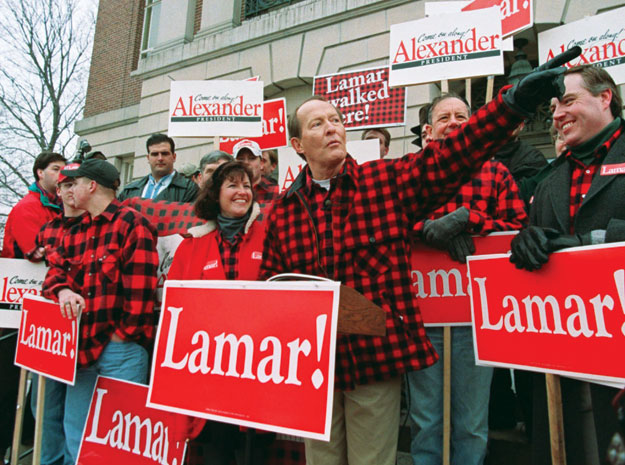At least once a year, a major newsroom in the United States produces a big story about the OTHER Catholic crisis in this land, which is the declining number of men entering the priesthood (and women and men entering religious orders, as well). The American priesthood is getting smaller and older.
It is possible to write this story over and over, year after year, covering the same ground and pretending that this is a “news trend.” However, skilled journalists can find new wrinkles within this decades-old story and, thus, do fresh reporting.
That’s good. And that is clearly what The New York Times national desk was going for in an interesting news feature that ran under the headline. “In Two Michigan Villages, a Higher Calling Is Often Heard.”
So what is the new angle? Well, it appears that there are small, intensely Catholic communities that are producing way more than their share of priests. Why is that? What does that look like on the ground?
What really jumped out at me was that the Times team actually — buried near the end of this piece — came close to discussing a really crucial demographics issue linked to this big story. More on that later.
At the heart of this piece are 26-year-old twin brothers, Gary Koenigsknecht and Todd Koenigsknecht, who are about to be ordained as Catholic priests. The story notes that they will be “two of 477 men in the United States expected to be ordained this year.”
They demonstrate that priestly vocations are not evenly distributed by family or geography: they are among six priests in their extended family, and among 22 from their hometown, Fowler, Mich., population 1,224. They officially tie up the leader board with the neighboring village of Westphalia, population 938, which has also produced 22 priests, making for a robust rivalry in both football and Roman collars.
In an era when the number of priests in the United States continues to dwindle — declining by 11 percent in the past decade and crippling the Catholic Church’s ability to meet the needs of a growing Catholic population — this rural patch of Clinton County offers a case study in the science and mystery of the call to priesthood.
With the older generation of priests dying off, it would take three times as many priestly ordinations as is occurring nationwide to maintain the population of 38,600 priests, according to the Center for Applied Research in the Apostolate at Georgetown University.
The story updates all of the dire statistics, as it should.
But the strongest material in the piece, from my perspective, is the detailed background information — high up in the report — about what Catholic life is like in these parishes. What’s going on here?
For the Rev. Todd Koenigsknecht and the Rev. Gary Koenigsknecht, encouragement arrived in many forms, from messages scribbled in crayon by grade-school children to $20 checks scrawled in shaky cursive, gifts from older parishioners to defray seminary costs.
Their home parish, Most Holy Trinity, hosts a weekly prayer hour dedicated to religious vocations and an annual fund-raiser to help cover tuition; it contributed more than $10,000 to each Koenigsknecht twin.
The houses in these two villages eight miles apart in Central Michigan are orderly, with Virgin Mary statues in front yards, American flags on front porches and unlocked front doors. Faith is the center of life, those who live here say: Everyone is Catholic, everyone is related and everyone shows up at Mass. The youth groups are active. Nearly all the students attending the prom in the villages begin the festivities by attending a regularly scheduled 4:30 p.m. Mass, dressed in their party attire.
Yes, it looks like an image from the Catholic past. But is fervor and systematic encouragement enough?
Probably not, methinks. Then, at the very end of the story there is this quiet reference:
Some parents do hesitate to give up their sons to the priesthood … campaigning for a more conventional — and seemingly less lonely — married life. That never occurred to Agnes Koenigsknecht, an organic dairy farmer and a mother of 10. “They’re not ours to keep,” she said of her twins. “How can you hold them back?”
The elevation of religious life here has also had an effect on young women: Westphalia has produced 37 Catholic nuns over the decades, according to diocesan data, while Fowler claims 43. Marita Wohlfert, who is 20, is in the running to make it 44, having professed her first vows last year with the Servants of the Lord and the Virgin of Matará and taking the name Sister Mary of the Holy Family.
She is the fifth of nine children for Jerry Wohlfert, who runs the millwork shop in town and went through four years of seminary himself before getting married. His oldest son attended a year of seminary, then ruled out the priesthood; his 18- and 14-year-old sons say they are considering it. “If the families are open to God’s calling,” Mr. Wohlfert said, “then the seminarians will come.”
And there it is. Parents are much more likely to consider encouraging their sons and daughters to serve the church when, well, there are more of them. If Catholic parents have one son, will they encourage the priesthood? One daughter?
The Times team sails right past this issue, which raises all kinds of questions about Catholic life and teachings, starting, of course, with artificial contraception. Why?
Back in 2002, I did a pair of columns focusing on the work of the Catholic progressive Father Donald B. Cozzens, former vicar for clergy in Cleveland and then rector of a graduate seminary in Ohio. He is the author of the controversial book, “The Changing Face of the American Priesthood” (updated edition here). I called these columns, “Fathers, mothers and Catholic sons,” parts I & II.
Once again, are modern parents as likely to urge their children to take vows and serve the church? The second column ended like this:
This attitude shift is especially significant when combined with a major statistical change in Catholic life. In the past, when large families were the norm, it was a matter of pride to have a son enter religious life. But what if most Catholic families contain only one son?
“When it has become normal to have two children or less, you are not going to find many parents who are encouraging a son — especially an only son — to become a priest,” said Cozzens. “They want him to get married, to have grandchildren and carry on the family name. …
“So there are fewer sons and there are more mothers who are asking hard questions.”
In other words, reporters, what else is different in that corner of Michigan? Can you say, “Demographics are destiny?” And doctrine matters, as well.











